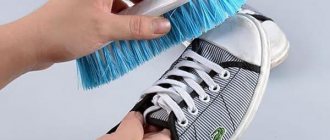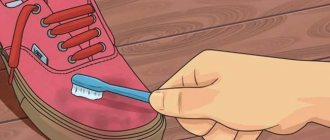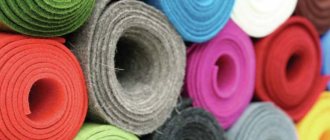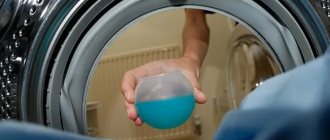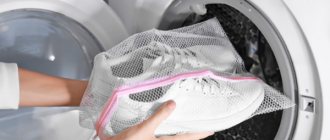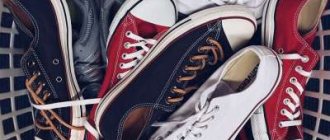Share on social media networks:
Even if you wear expensive and branded shoes, the problem of bad odor coming from shoes can affect you. Who will like a “bouquet” of pungent aromas? This problem will not only spoil the mood of you and the people around you, but it can also easily “tarnish” your reputation. In addition, the nasty odor is a consequence of the proliferation of bacteria, which lead to diseases. That is why you need to deal with this and know how to always keep your boots clean and sterile. How to wash winter boots inside? - Now we will tell you about it.
How to clean the inside of sneakers?
Gently wipe the inside of the sneaker with cotton wool soaked in vinegar or hydrogen peroxide. This will help get rid of the unpleasant odor.
Interesting materials:
Is it possible to have wine during Lent 2022? Can you put dishwashing detergent in the dishwasher? Is it possible not to indicate salary in the staffing table? Can boots be washed in a washing machine? Is it possible to clean on Saturday before Easter? Is it possible to pour cold water into a thermos? Is it possible to use boiled water in a humidifier? Is it possible to take out trash from home on Palm Sunday? Can you add mint to wine? Is it possible to find out on VK who viewed the photo?
Causes of stink
To fix a problem, you need to know the cause of its occurrence. In most cases, a nasty odor appears due to heavy sweating of a person. For example, in hot seasons this is quite natural for each of us, because thereby the body cools down. Water is 95 percent of sweat, only a few remaining percent are various microelements, acids, etc. However, this same humidity is an excellent place for the proliferation of a large number of microbes and bacteria. They, in turn, exude an unpleasant aroma.
In addition, the causes of stench can be:
- low-quality materials used to sew shoes;
- an abundance of synthetics in the lining and outer part of the boots;
- lack of breathability effect;
- lack of shoe care and regular cleaning of dirt.
Important! Foot fungus may also be the cause. And here you have to worry about not only washing shoes, but also treating fungus.
Is it machine washable?
How to wash winter boots inside? If you do not want to risk your boots and, in the worst case, irreparably damage them, then it is best to collect and study all the care materials. Consult the seller when purchasing:
- Most global brands indicate the necessary information on the labels. However, if it is still missing, then most likely it is listed on the manufacturer’s official website.
- The greatest attention should be paid to what material the shoes are made of. For example, regular washing in a washing machine will only benefit sneakers and sneakers, and even leather boots, but for suede it is “killer”.
- If the boots are not stitched, but glued, then washing them is extremely contraindicated.
If you are still planning to wash your winter boots inside and out, then follow these rules:
- Washing mode - special for shoes or the shortest cycle with a minimum temperature of 30 C.
- The product is a liquid powder.
- Spin - no.
Important! You also need to additionally use a special bag for washing clothes.
How to dry it properly?
In addition to how to clean the inside of winter boots, it is important to know how to dry them properly, because drying is also incredibly important:
- The best option would be to dry your boots outside in the shade.
- If weather conditions do not allow this to be done or there are other reasons, then special shoe dryers will help you. By the way, you don’t have to buy one. There is a separate article on our website from which you can learn several simple ways to make a shoe dryer with your own hands.
Ways to get rid of stench
If your favorite boots or combat boots are already saturated with a nasty smell, then simply washing your feet is not enough. You need to clean your shoes so that the smell goes away.
Anti-mud method
If this is possible, then the first thing you should do is change the insoles. And yet there are shoes in which this cannot be done.
This method will help you clean winter boots from the smell and dirt inside. All you need is a cleaning product, for example, the same washing powder, and a toothbrush. Pour a little powder into the boot, moisten it with water and clean off the dirt.
Important! Thanks to the small size of the toothbrush, you can easily clean even the most difficult places - seams and joints.
Once you achieve the result, do not forget to rinse your shoes thoroughly and dry them.
Handwash
This cleaning option will allow you to remove dirt from all types of shoes, with the exception of suede, fur and velor products.
Manual shoe cleaning
The following algorithm of actions will help you wash your shoes without negative consequences:
- the sole is cleaned of dirt;
- removable parts are washed separately;
- the product is immersed in a container of water at a temperature not exceeding forty degrees;
- in case of severe contamination, it is possible to treat with laundry soap using a sponge;
- Remains of soap and dirt are washed off with running water;
- Excess moisture is removed with a dry, clean cloth.
It is important to note that all types of leather cannot be immersed in water. Instead, the product is treated with a damp sponge.
Models made of membrane material can be wetted and even soaked. But detergents must be either special or liquid. The powder is not completely washed out from the pores of the material, which reduces the functions of vapor conductivity and moisture resistance.
You should be very careful when washing shoes whose quality is in doubt. Excess water or high temperature can destroy the adhesive base, which will lead to separation of parts.
Removing contaminants
The appearance of your favorite boots will last longer if you take good care of them.
How to wash winter shoes made from different materials:
- Leather. It is not recommended to wash leather boots or sneakers in the washing machine. Products do not tolerate excessive moisture. As a result, the skin may wrinkle and lose its original appearance. To clean it, it is better to use damp cloths and soapy cleaner. After complete drying, you need to treat the boots with water-repellent impregnation and a special cream.
- Suede/nubuck. It is strictly forbidden to wash these materials and generally not over-moisten them. For cleaning it is necessary to use special brushes. Moistened cloth wipes can only be used to remove dirt from the sole and heel.
- Knitwear. Knitted boots are machine washable. However, please check the product label for this information before downloading. If the manufacturer does not indicate it, more detailed information can be found on the company's website. Do not machine wash if the sole is connected to the upper only with glue, without additional stitching. If in any doubt, it is better to prefer manual cleaning.
- Textile. Fabric products can also be washed if there are no contraindications from the manufacturer. You should approach this cleaning method with caution if the product has decorative decorations (rhinestones, beads and other external elements).
- Synthetic leather. No matter how high-quality the replacement is, it does not have all the properties of natural materials. And excessive moisture can instantly damage the product. Therefore, it is definitely better to refrain from washing artificial leather products. You can use damp cloths for cleaning. And for additional surface protection, be sure to use a high-quality cream.
Dry cleaning
Suede shoes perceive water on their surface extremely negatively. Therefore, only the dry cleaning method is suitable for suede boots. To do this, you will need a double-sided brush, with stiff bristles on one side and rubberized on the other.
First, dust and dirt are combed out with the first side, then the pile is raised with the second side. Products made from nubuck and velor can be cleaned in the same way.
Heavy dirt can be removed with cleaning foam for suede products. You can buy it at any shoe store.
We take into account the manufacturer's recommendations
Washing in an automatic machine can damage any product, so before loading shoes into the drum, carefully read the manufacturer’s recommended care information. If winter boots are purchased at a large store, then comprehensive information can be obtained by studying the label on the product or the booklet included in the shoe box. As a last resort, all information with recommendations can be posted on the manufacturer’s website.
Be sure to pay attention to the material that served as the basis for the manufacture of shoes. Fabric products can be easily cleaned in a washing machine, while the machine will have an unpredictable effect on suede and leather shoes. Automatic washing is contraindicated in the following cases:
- if the products require repair (the sole has come off, part of the shoe has come off);
- if the quality of the shoes is inadequate (low-quality models will show protruding threads, glue stains, cracks);
- when you are dealing with membrane products;
- if the surface is replete with various decorative inserts. If you rotate it too hard in the washing machine, part of the decor may come off.
Models with leatherette inserts require preparation before the automatic washing process. A number of simple rules will allow you to preserve elements from a leather substitute. You should be very careful when cleaning items decorated with fur; during the washing process, the fur trim may come out.
In the vast majority of cases, the manufacturer categorically prohibits washing shoes in a washing machine. The best way to care for winter boots is to manually dry or wet clean them. If you properly remove dirt from the surface and inside, the quality of cleaning will in many ways surpass washing in a machine.
Insoles care
Insoles, especially leather ones, need regular cleaning just as much as the pair of shoes themselves. Alkaline detergents are not applicable to them, as they can cause loss of shape or roughening of the material.
There are several cleansers that combine delicacy and high efficiency:
- baby cream;
- facial scrub;
- hydrogen peroxide;
- special cleaning foam.
All these products will cope perfectly even with severe dirt on the insoles.
Drying
Washed and laundered shoes must be thoroughly and properly dried. Do not leave products to dry on radiators or heaters, this will lead to deformation. Skin dried near heating appliances becomes hard and brittle.
How to dry boots
It is recommended to dry boots in a warm room with good ventilation. You need to stuff light or white paper inside.
If necessary, a few tips will help speed up the process:
- frequent change of paper inside the product;
- put shoes on heated floors;
- use special electric dryers;
- use bags of silica gel;
- Before drying, remove excess moisture with a towel or napkin.
If you follow the recommendations for drying your boots, the elasticity and softness of the materials will remain the same as that of a newly purchased pair.
Cleaning the inner surface
Regular cleaning of the inside of your shoes will prevent the appearance of unpleasant odors. This is especially true for sports models, ski boots or figure skating boots. As a preventive measure, it is enough to treat the surface with a damp cloth once a week. You can add a little ammonia, this will disinfect the surface.
In winter, you should regularly leave your boots in the cold, for example, on the balcony. This will also give a certain disinfecting effect.
If you have a problem, baking soda helps a lot. It is poured generously onto the surface and left for several hours. Residues are shaken out or removed with a vacuum cleaner.
Removing stains
In addition to atmospheric and soil pollution, more complex stains may appear on boots. Stained sports shoes made of membrane materials should be taken to dry cleaning. Experiments with industrial stain removers and improvised means can significantly damage this material.
How to remove a stain
Other types of boots can be easily cleaned from stains in different ways, depending on the composition of the stain:
- traces of grass can be removed with triple cologne; this method is suitable for white leather products;
- coffee and tea will be cleaned with ammonia or table salt;
- greasy stains will be removed with an aqueous solution of dishwashing liquid;
- bleaching yellowed or gray areas can be done using citric acid;
- a solution of hydrogen peroxide will remove yellowness;
- Laundry soap is an almost universal stain remover;
- suede parts are cleaned using absorbent substances such as talc, potato starch or baby powder;
- stains of unknown origin can be removed with a paste of baking soda and water;
- bright colored models can be cleaned with table vinegar.
In cases where stains appear on textile parts, you can use an appropriate industrial stain remover.
All products are first tested on inconspicuous areas.
Preparation for the procedure
Before any type of washing, you must do the following:
- Remove the laces and wash them separately.
- Remove the insole. Textile ones can be washed by hand or in a machine, but leather ones can only be washed.
- Remove any adhered dirt from the sole and heel. To do this, use a dry brush.
- Fasten the zippers.
Before washing shoes, remove the laces
After this, you need to clarify the information on the permitted type of washing on the label or make a decision yourself.
Is it possible to wash the inside of winter shoes?
Shoes made from materials such as suede cannot be washed. ... Winter boots made of other materials (leather, nubuck) can be wiped inside with a slightly damp cloth with detergent applied. At the same time, try to open the inside of the boots or shoes as much as possible, but without damaging them.
Interesting materials:
How to install laminate flooring in a long room? How to root Japanese quince? How to root a panicle hydrangea cutting? How to root a cutting in water? How to root hydrangea in water? How to root chrysanthemums from a store bouquet? How to root juniper from cuttings? How can a Ukrainian travel to China? How can a Ukrainian come to Russia? How to decorate a room without renovation?
Main types
There are several categories into which boots are conventionally divided.
- Seasonality.
There are winter, summer and demi-season models. They differ in finishing options, sole thickness and the presence or absence of insulation.
- Material of manufacture.
Depending on the time of year and budget, you can choose products made from natural or artificial leather, suede, nubuck, eco-leather and fur trim. For active recreation, there are boots with a membrane.
- Division by gender and age.
Both men's and women's collections, as well as children's, are produced. The collections for children have a particularly large selection of colors and decorative elements.
- Sports models.
They are characterized by wear resistance and resistance to low temperatures and humidity.
Sports shoe models
They, in turn, can be divided by type of sport:
- ski;
- trekking (for hiking and conquering mountain peaks);
- for figure skating;
- for extreme sports
Regardless of the type, boots need regular cleaning. Based on the material of manufacture, it is necessary to individually select methods and means for removing contaminants.
